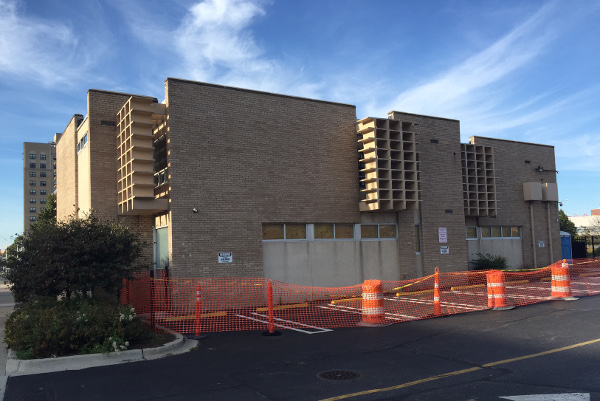
The signs are everywhere--the caution tape, the marking of underground utilities, the removal of trees--that a demolition is near. The Barat House at 5250 John R. Street shows every indication that it is about to be razed. As reported last year, this midcentury building was purchased by the Detroit Institute of Arts with the possibility of being replaced by a surface parking lot for 60-70 cars. Today, the DIA's final decision is self evident. (Disclosure: I am an employee of the DIA.)
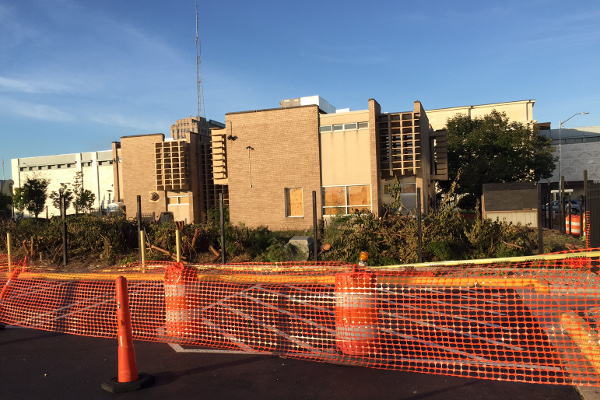
The Barat House stands boarded up and roped off.
The Detroit Institute of Arts lies in the background.
Buildings are like people--they exist until the irreversible moment of death. Once destroyed, they are gone forever. Even an exact reconstruction would only be a clone, a lookalike. Before we say goodbye forever to this particular building, I think it is important to recall the history of the building and its architect. It was constructed originally as an inpatient psychiatric facility for teenage girls in 1961. The organization that built it, the League of Catholic Women, had roots in Detroit going back to the turn of the century.
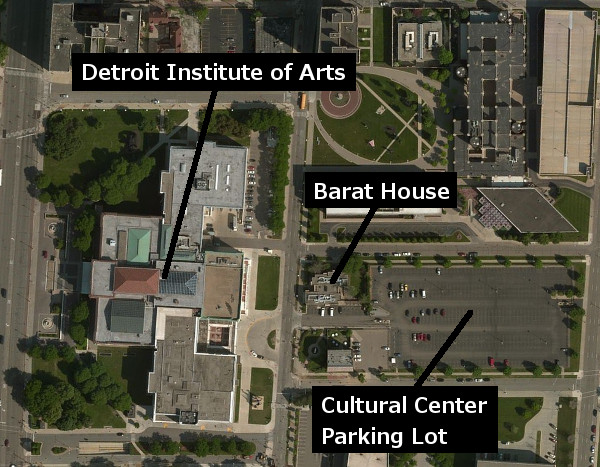
In 1906, a group of Catholic women in Detroit founded the Weinman Club with the aim of providing relief to immigrants coming into the city. The group changed its name to the Catholic Settlement Association five years later. In 1912, the group raised funds to set up a home where young working girls new to the US could obtain low-cost room and board while receiving a basic education in both scholarly and domestic subjects. Catholic Settlement Association member Mrs. Annie Hammond Casgrain offered space in her home at 162 (later 622) West Lafayette Boulevard free of charge to the organization. The home opened in February 1913. This building has since been demolished.
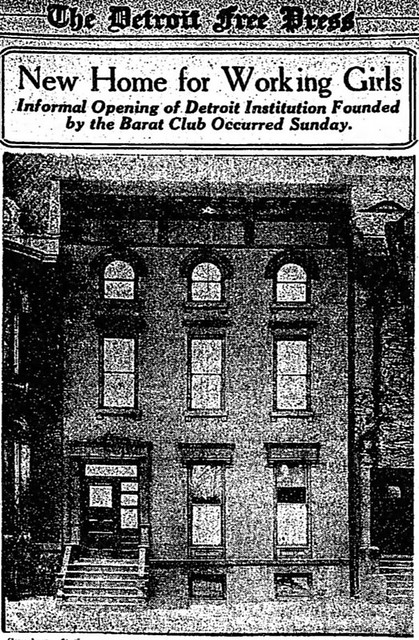
The association called this project the Barat Club in honor of Saint Madeleine-Sophie Barat (pronounced Ba-rah). Saint Barat was a tireless advocate for free education to all children regardless of class, especially young women and girls. She founded the Society of the Sacred Heart in 1800 to carry out that mission.
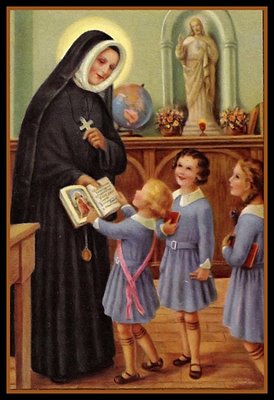
The Catholic Settlement Association reorganized as the League of Catholic Women in 1915. The following year, they purchased, renovated, and expanded a three-story home at 47 (later 89) Watson Street in Brush Park. The first floor and basement of the building facilitated the League's social functions, and the upper floors were outfitted to shelter up to thirty young women of the Barat House. This home has since been demolished.
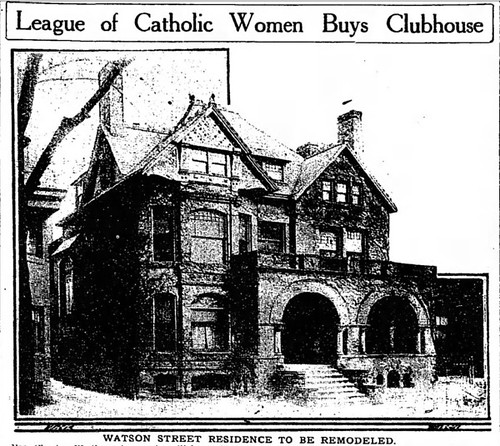
As immigration to the US declined, the League of Catholic Women widened the scope of its service to the community. The Barat House evolved from being a home for working immigrant women to a safe haven for underprivileged and at-risk girls of any race or religion. In 1945, the League purchased a home at 460 East Grand Boulevard to be used solely as the new Barat House. This was the former home of Albert Fisher, an automotive pioneer who died in 1942. This home has since been demolished.
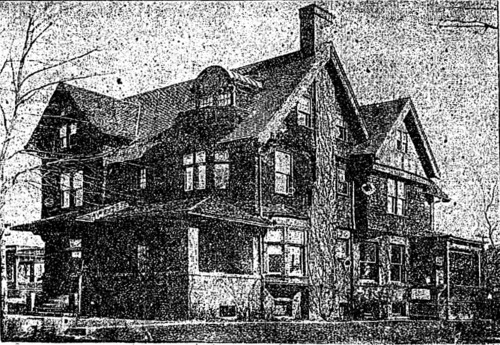
By end of the 1950s, the League of Catholic Women had need of a larger and better accommodations. They would require a proper inpatient psychiatric facility in order to better serve the young female victims of abuse and mental illness who sought refuge at the Barat House.
"Mental Health Architecture"
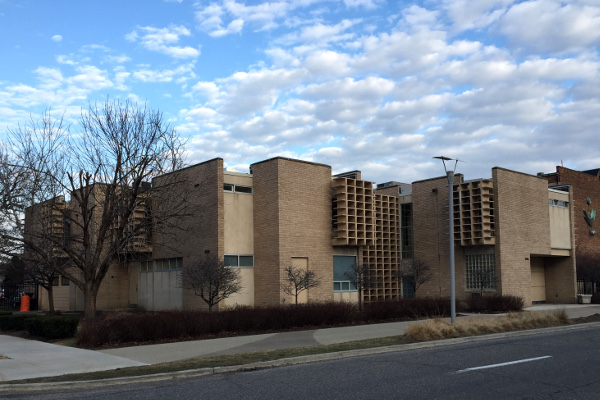
In October 1960, the League of Catholic Women announced that a brand new building was to be constructed at John R. and Frederick Streets, scheduled to be completed the following September. "For the past year," reported the Detroit Free Press, "[Director Patricia] Bebin has worked with Dr. Joseph Fischhoff, consulting psychiatrist at Barat House, and Robert H. Snyder, the architect, to 'build a warm and attractive home in which the girls could realize their best possibilities.'" The 24-bed treatment facility was an architecturally experimental work, as the Free Press reported:
According to the architect, Robert Harter Snyder, the home provides "an environment that would improve the emotional stability of the girls. We had no real precedent to follow, for little has been done in the field of mental health architecture. We sought to develop a spirit of containment without restraint." Instead of bars, "maximum security is provided by decorative sun screens of pre-stressed concrete," Mr. Snyder says. "The outside will be soft gray brick, and the inside walls cement block."
Living space is to be increased by foldaway beds and hidden wire storage basket units which replace the usual chests of drawers. Bookcases are to be built-in, with pre-fabricated desks welded to the wall. (Detroit Free Press, Oct. 8, 1960)
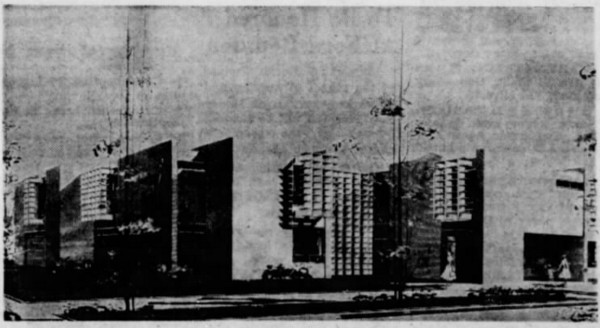
Robert Harter Snyder was born on August 2, 1918 in Toledo, Ohio. After obtaining a Bachelor of Architecture from Syracuse University in 1941, he went on to work for Albert Kahn's architectural firm, teach at Syracuse, and serve in the US Navy. In 1948, Snyder was admitted to the Cranbrook Academy of Art, where he studied architecture and urban planning under Eliel Saarinen and obtained his Master's Degree in 1950. After Saarinen's death that same year, Snyder was appointed Head of the Architecture Department at Cranbrook Academy of Art, a position he held until 1965.
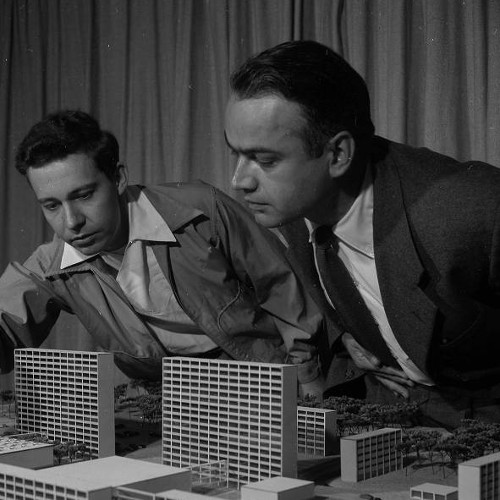
Another example Snyder's work that makes a creative use of sun screens is the office building for the Shatterproof Glass Corporation in southwest Detroit, also built in 1961.
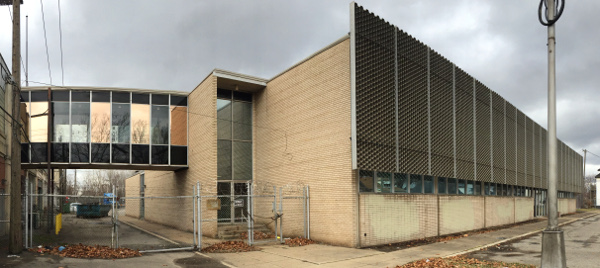
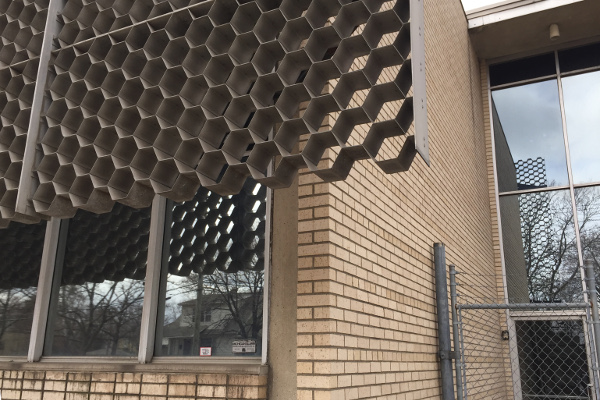
Snyder openly criticized the urban renewal projects of the 1950s and 1960s that destroyed so many communities in Detroit. "Urban renewal is extravagantly wasteful," Snyder said in testimony before Congress in 1960. If every slum in every city were cleared, he asked, "would we have corrected the basic social faults that relate to the development of slums in the first place?" He pointed out that the condemnation payouts "reward the slum landlord handsomely for his failure to maintain his property at decent, livable standards."
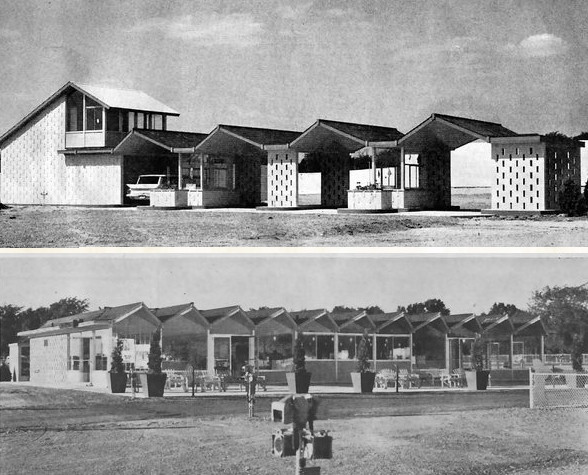
Snyder's work can be found beyond Metro Detroit, scattered throughout Michigan and his native Ohio. One notable early commission was the home of James and Doris Byerly, built in 1954 on a twelve-acre wooded estate in Owosso Township. The "binuclear" home was two buildings connected by a glass corridor, thereby separating the living and sleeping areas for the family of six.
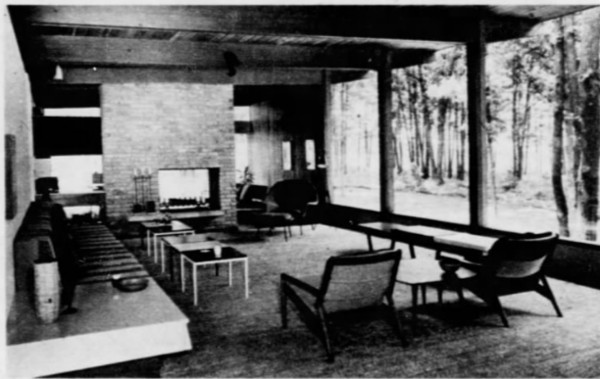
A 1957 article in the Detroit Free Press describes the exterior of the home as sided in "vertical fir boards (in) rich brown ... accented by occasional panels of yellow, blue or persimmon."
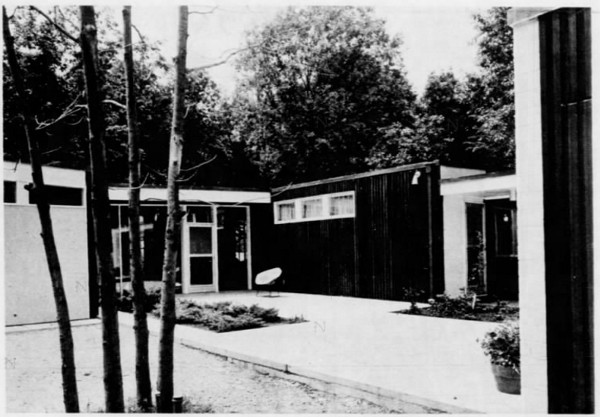
The house is still standing, but has since been painted gray and appears to be vacant and dilapidated.

Built around the same time as the Byerly House was the home of Noel and Isabel Buckner. It was set into the side of a hill with a walk-out basement overlooking Walnut Lake in West Bloomfield Township. The Buckners remained in the home for the rest of their lives.
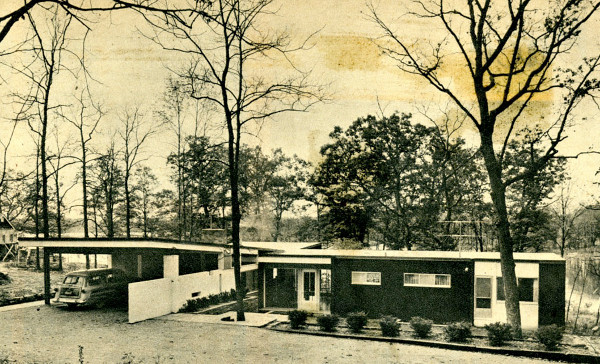
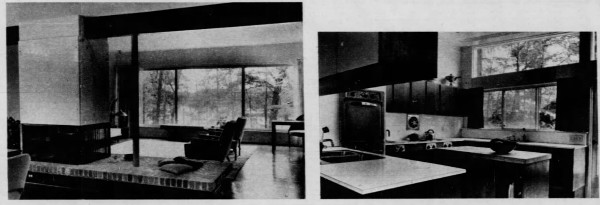
After the passing of Isabel Buckner in 2012, the home was sold, torn down, and replaced with a structure of a different character.
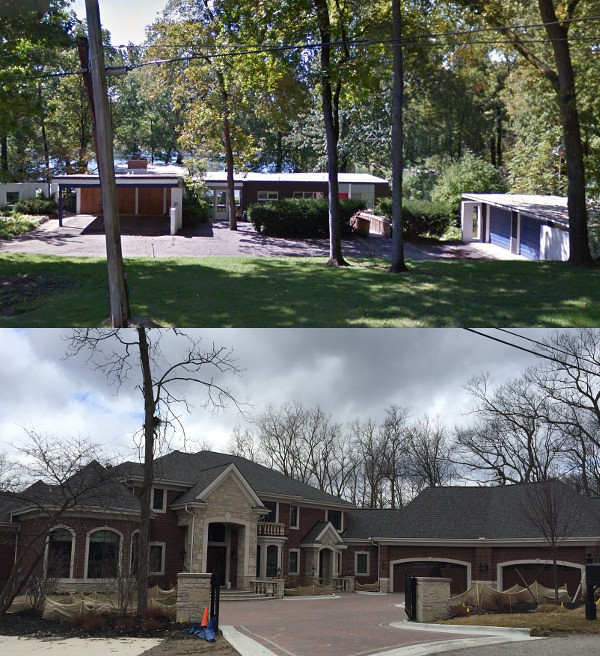
Robert Harter Snyder died on October 12, 1985.
Let us remember the legacies of both Mr. Snyder and the League of Catholic Women, as the Barat House will itself soon no longer stand as a testament to them.
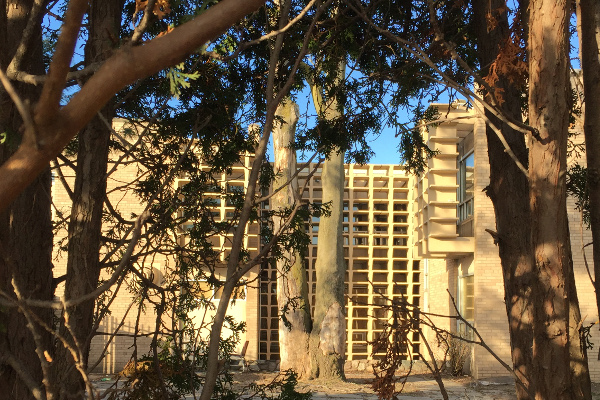

I shed a few tears. Thank you for a beautiful piece.
ReplyDeleteA wonderfully written article....as a third-generation Detroiter, i really like to hear the history of my city...
ReplyDeleteThe problem of brutalist historic preservation continues
ReplyDeleteBrutalist buildings are very hard to love because of their cold, forbidding appearence. This is why many people dont care if they get demolished.
ReplyDeleteThe paintings and sculptures in the DIA's contemporary galleries aren't much easier to love, but they fought tooth and nail to prevent a single item from being auctioned off during the city's bankruptcy.
DeleteThanks for sharing this information. I really like your blog post very much. You have really shared a informative and interesting blog post with people..
ReplyDeleteHome Decor
I lived at Barat House in 1988. There were 23 other girls there. We were paid for chores. Went to school and our needs were met. We formed a sisterhood. I am friends with many of them via social media today.
ReplyDeleteThat is Wonderful to hear. I was an employee their in 1995. I enjoyed my 3 years of employment there the young ladies were so easy to love and full of hope. I will miss barat house tremendously...
DeleteI am so happy that "Unknown" and Ms Lee have such fond memories of Barat House. I worked there during the summer of 1970 and enjoyed my time there with the girls and their home, as well as, the field trips to the beach that we went on. I was an assistant recreation leader.
DeleteToday my husband and myself went by where Barat House use to be, I lived there with a amazing group of young ladies in 1985-1986, pinky (jackie), kim(chinadoll), monique (moe), crystal, few others our house Mother's were awesome, we went skating,shopping, we had chores, did our laundry, not bad memories, each one of us had a story, we grew from each other's experiences. Thank you Mr.Snyder for a nice place for us to stay, and thank you for the history & article Barb
ReplyDeleteThis comment has been removed by the author.
DeleteWow, I lived there in 1984 I think, I remember Dr, Souad and Cliff and Juanita as staff. I remember a girl name Tona, Monique, and Candy that I recently got in touch with.
DeleteI believe it was a great place for young girls with nowhere else to go, I was 14 at the time, I remember going to see the Jackson 5 concert which was amazing, I remember shopping every few months at the department store for clothes with an allotted amount of money per child, we were definitely taken care of, sad to hear it is gone
This comment has been removed by the author.
DeleteKeep sharing such nice and informative parking posts. It will be quite helpful for people to find a parking lot. short term jfk parking deals
ReplyDeleteI lived at Barat House in 2002-2004. It was my home and even though it had mamy struggles dealing with young girls with an array of different issues I'm saddened that it no longer stands. This place was there for young girls when there was no where else to go. To this day I am in contact with some of the girls and staff members who where there when I was. This place may not have been perfect and funding became almost no existent at that time but nonetheless it was better than being on the street. I can honestly say that the staff who worked there did the best to make it feel like home and they took their jobs to heart and loved us girls like we were family. I'll forever be grateful for Barat House.
ReplyDeleteI worked at Barat House during the time you were there! I fondly remember the girls who lived there and still think about them to this day.
DeleteI really enjoyed working there as a staff mother, we all worked together ❤ providing and nurturing the young girls/ladies. I remember one lady no, a few young ladies whom heart I touched, and who touched mines. Thank you Mr Snyder and the Catholic Women League for your visions of hope during a time of despair. The young women really blossomed from your work. What a Blessing it was!
Delete• A decision has been made to upgrade the company Internet connection. http://82zrh2l7o9.dip.jp http://8d7uirc6xi.dip.jp http://egifzb8pt8.dip.jp
ReplyDeleteCandidate must have strong knowledge about computer network managment and security. http://3vn5bm7qlq.dip.jp http://t7dqlx05m6.dip.jp http://hmwedeu3qm.dip.jp
ReplyDeleteI'm Абрам Александр a businessman who was able to revive his dying lumbering business through the help of a God sent lender known as Benjamin Lee the Loan Consultant of Le_Meridian Funding Service. Am resident at Yekaterinburg Екатеринбург. Well are you trying to start a business, settle your debt, expand your existing one, need money to purchase supplies. Have you been having problem trying to secure a Good Credit Facility, I want you to know that Le_Meridian Funding Service. Is the right place for you to resolve all your financial problem because am a living testimony and i can't just keep this to myself when others are looking for a way to be financially lifted.. I want you all to contact this God sent lender using the details as stated in other to be a partaker of this great opportunity Email: lfdsloans@lemeridianfds.com OR WhatsApp/Text +1-989-394-3740.
ReplyDeleteI was there in 1966. Remember Thewalt, Donovan, Avery...and, of course, my best friend, Judy Cohen.
ReplyDeleteI just returned from a trip to Michigan where I haven’t been in over 25 years. One of the places that I asked about was Barat house. To know that it had such an impact on my life as well as others is amazing! I remember Krystal, Sauad, whom I actually still have a photo of, Ms Lee, the whole gang during’84’. Going to the Jackson concert, preforming in a talent show with a fractured wrist! I have memories that I will cherish forever!
ReplyDelete